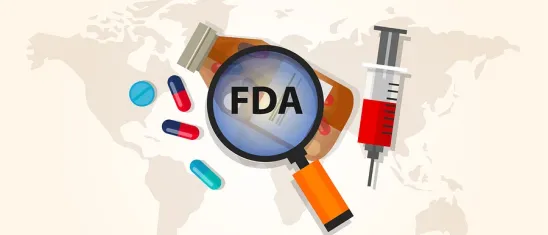In an effort to address the challenge of increasing drug prices for patients and families, the U.S. Food and Drug Administration (“FDA”) and the U.S. Department of Health and Human Services (“HHS”) recently outlined a proposal for facilitating the importation of pharmaceuticals originally intended for foreign markets. The Safe Importation Action Plan (the “Action Plan”), jointly announced on July 31, 2019, describes two different potential pathways for importing certain drugs. The Action Plan offers only a limited overview of the proposed pathways and does not provide much detail on how these pathways would be implemented.
The Action Plan, which would advance the general goals set forth in the Trump Administration’s Blueprint to Lower Prescription Drug Prices, also appears to be motivated by pressure from state legislatures; Vermont, Colorado, and Florida have recently passed legislation that would, if certified by HHS, permit the importation of foreign drugs into these jurisdictions.
Below, we summarize the Action Plan’s two proposed pathways for the importation of certain drugs intended for foreign markets.
Pathway 1: Importation of Canadian Drugs by States, Wholesalers and Pharmacists Pursuant to Demonstration Projects
Under this pathway, HHS and FDA would publish a Notice of Proposed Rulemaking (“NPRM”) under the authority granted in Section 804 of the Federal Food, Drug and Cosmetic (“FDCA”). Section 804 of the FDCA authorizes the importation of certain prescription drugs from Canada upon the condition that the Secretary of HHS certifies that importation would “pose no additional risk” to U.S. consumers, and that such importation would “result in a significant reduction in the cost” of those prescription drugs. Since its enactment in 2003, no HHS Secretary has provided the certification required to import drugs under Section 804.
The NPRM would establish a framework allowing states, pharmacists, and wholesalers to import certain prescription drugs from Canada. Specifically, the drugs eligible for importation would need to: (a) be approved for sale in Canada; (b) contain essentially the same active pharmaceutical ingredient (“API”) used in the FDA-approved prescription drug (i.e., the same API manufacturing facility must produce the API used in both the Canadian-approved and FDA-approved drug and manufacture the API under FDA’s current Good Manufacturing Practices (“cGMPs”) listed in FDA’s drug approval); and (c) be labeled to indicate they were originally intended for distribution in Canada. Importers would be required to provide an attestation and supporting documentation regarding the authenticity and eligibility of the drug. The following categories of drugs are specifically excluded from eligibility under Pathway 1: controlled substances, biological products, infused drugs, intravenously injected drugs, drugs inhaled during surgery, certain parenteral drugs, and any drug subject to a Risk Evaluation and Mitigation Strategy.
To import products into the United States, states, wholesalers and pharmacists would need to submit a demonstration application to HHS explaining how they would comply with applicable safety, and other regulatory requirements (e.g., drug tracking and tracing from manufacturer to pharmacy, labeling, distributor registration, adverse event reporting, recalls, and cGMP compliance). Additionally, importers would be required to prove that that the importation of drugs under this pathway would result in a significant reduction in the cost of covered drugs to the American consumer. A demonstration application, if granted, would be time-limited and subject to revocation if the importer does not comply with specified requirements or a risk to public health or safety is identified.
Pathway 2: Importation of Foreign-Marketed Versions of U.S.-Approved Drugs by Manufacturers
Unlike Pathway 1, which is restricted to drugs approved by Health Canada, Pathway 2 would allow manufacturers to import versions of their FDA-approved drugs that are sold in foreign countries. To import drugs under this pathway, manufacturers (or their authorized representatives) would be required to establish that the version of the drug sold in a foreign country is the same as the U.S. version approved by FDA (e.g., through manufacturing records). If this condition is met, FDA would allow the drug to be labeled for sale in the United States and imported pursuant to section 801(d) of the FDCA under the existing approval for the U.S. version. Manufacturers who qualify to import drugs under this pathway would be permitted to market the imported drug under a different National Drug Code than the U.S. version. According to the Action Plan, this pathway “would highlight an opportunity for manufacturers to use importation to offer lower-cost versions of their drugs.” HHS is evaluating whether additional safeguards would be needed to ensure that the imported drug is a bona fide foreign version of an FDA-approved drug. FDA plans to publish a draft guidance document that will outline detailed recommendations on the requirements for importing products under Pathway 2.
Industry stakeholders have expressed concern that these new pathways would enable the entry of drugs outside the “gold standard” U.S. supply chain and thereby pose risk to U.S. patients. Concerns have also been raised internationally that the Action Plan may trigger drug shortages in Canada. It remains to be seen how HHS and FDA will address these concerns, as the Action Plan does not specify a timeline for publishing the proposed rule or the guidance document. Their publication will provide an opportunity for stakeholders to submit comments in response to the specific details of the proposed pathways. Stakeholders should continue to monitor any developments to the Action Plan and to submit comments on the proposals as they become available. Stakeholders should also evaluate the potential impact of these importation proposals on their current distribution and supply chains.




 />i
/>i

